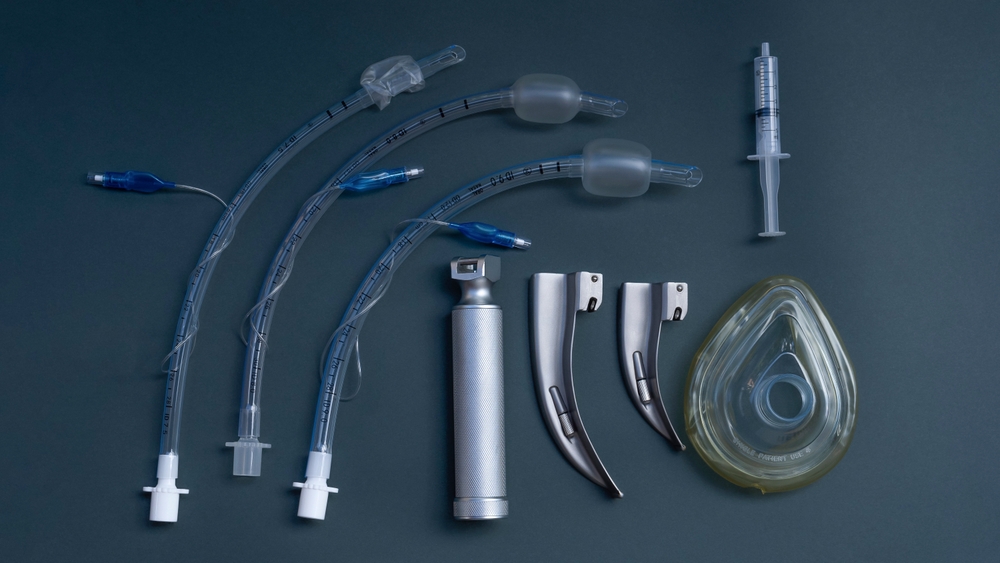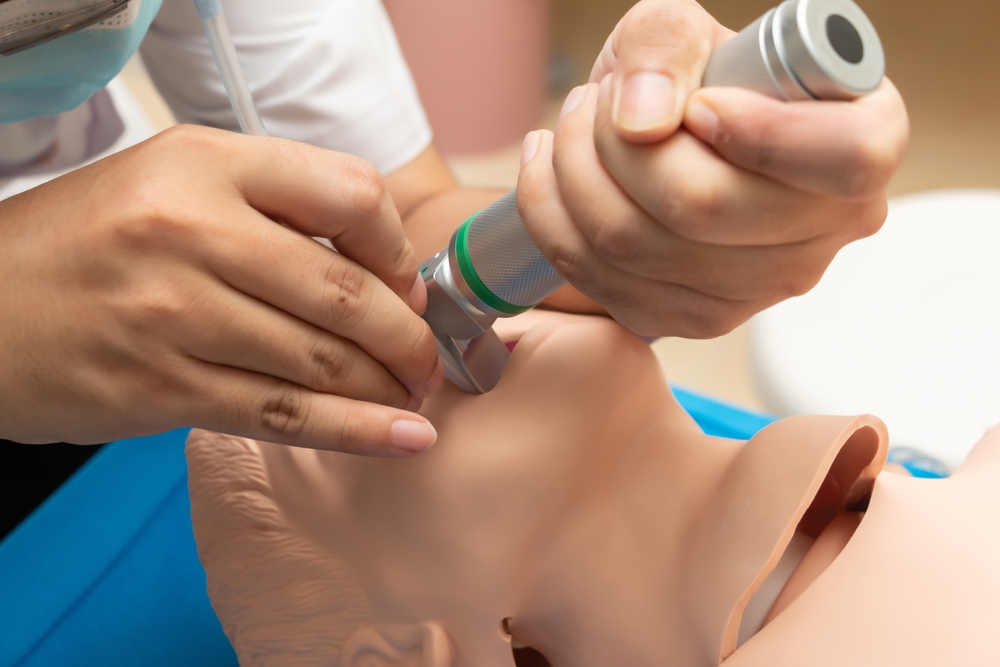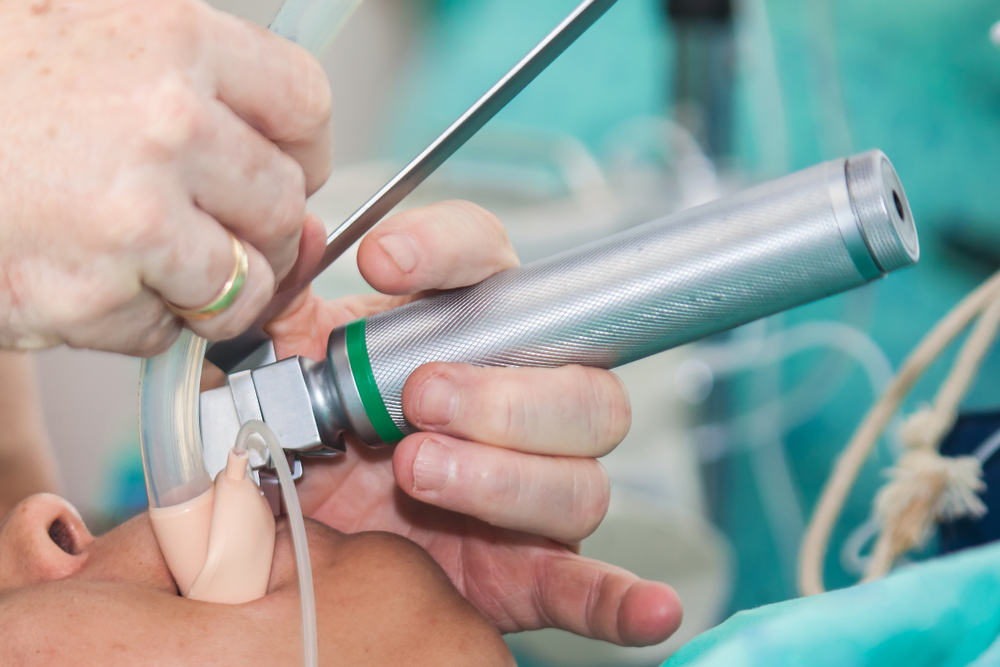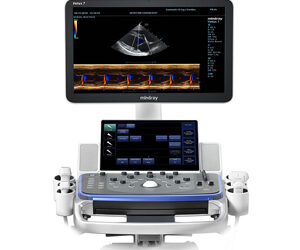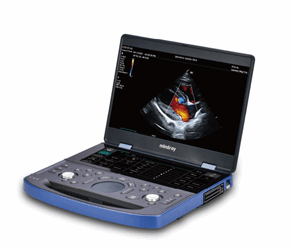Intubation, a term often heard in hushed tones across hospital corridors and emergency rooms, is a medical procedure that’s both intricate and lifesaving. At its core, intubation involves placing a tube into a patient’s trachea (the windpipe) to maintain an open airway. This is more than just a technical task; it’s a bridge between life and breath, especially in critical situations where every second counts.
The need for intubation arises in various medical scenarios. It becomes crucial when patients are unable to breathe on their own due to reasons like respiratory failure, obstruction in the airway, or during surgeries requiring general anesthesia. The endotracheal tube, the star of this procedure, acts as a conduit for air, ensuring that oxygen continues to flow into the lungs, and by extension, sustaining life.
Tracing the Roots of Intubation
The history of intubation is a fascinating voyage through time, showcasing human ingenuity and the relentless pursuit of medical advancement. The story begins in the early 18th century when intubation was a rudimentary practice, far from the sophisticated procedure we know today. Initially, it was more of an experimental technique, used sparingly due to the lack of proper instruments and understanding.
Fast forward to the 20th century, the era marked significant strides in intubation. The invention of the laryngoscope, a tool designed to provide a clear view of the vocal cords and the windpipe, revolutionized the procedure. This innovation offered medical professionals a window into the human airway, making intubation a more controlled and successful endeavor.
In the subsequent years, the technique of intubation continued to evolve. From the development of safer and more effective endotracheal tubes to the integration of sophisticated monitoring equipment, each advancement brought us closer to the nuanced procedure we practice today. Modern intubation is not just about placing a tube; it’s a symphony of precision, timing, and technology, all working in harmony to save lives.
The 21st century brought with it cutting-edge technologies like video laryngoscopy, which allows for a digital view of the airway, making intubation safer and more efficient, especially in challenging situations. The integration of simulation-based training in medical education further refined the skills of healthcare professionals, ensuring that they are well-prepared for real-life scenarios.
Today, intubation stands as a testament to human resilience and the relentless pursuit of medical excellence. It’s a procedure that has saved countless lives, a procedure that continues to evolve, adapting to the ever-changing landscape of healthcare. As we look to the future, one thing remains certain: the journey of intubation, from its humble beginnings to its current state as a cornerstone of modern medicine, is a remarkable story of progress and hope.
Related: Fiber Optic Blades
Detailed Understanding of Intubation
The respiratory system comprises the nasal cavity, mouth, pharynx, larynx, trachea, bronchi, bronchioles, and alveoli. Understanding this anatomy is crucial for intubation, as it involves navigating a tube past the vocal cords into the trachea.
Types of Intubation
Intubation can be either oral or nasal. Oral intubation is more common and straightforward, while nasal intubation is used when oral access is not viable. Non-invasive methods like CPAP or BiPAP are also available for less critical cases.
When to Intubate
Intubation is necessary in severe respiratory distress, unconsciousness with compromised airway protection, severe trauma, anaphylaxis, or during surgeries affecting breathing. It should be avoided or modified in the presence of severe facial injuries or significantly altered laryngeal anatomy.
Preparing for Intubation
A thorough airway assessment is essential, looking for indicators of potential difficulties. The equipment required includes a laryngoscope, endotracheal tube, stylet, syringe, and suction catheter.
The Intubation Procedure
The process involves sedating the patient, opening the mouth, inserting the laryngoscope blade to visualize the vocal cords, and guiding the tube into the trachea. Troubleshooting may be necessary if obstacles like obscured view or tube misdirection occur.
Post-Intubation Care
After intubation, it’s important to regularly monitor the tube’s position and manage sedation. Providing nutrition and hydration through alternative methods is also crucial. Monitoring for any signs of distress or discomfort is key.
Extubation
Extubation, or tube removal, requires readiness for the patient to breathe independently. Post-extubation care includes monitoring for complications like a sore throat or hoarseness.
The When and Why of Intubation
Intubation, a lifeline in many critical care scenarios, is much more than just inserting a tube. It’s about understanding when this vital procedure is a must, and when it might do more harm than good.
Decoding the Call for Intubation
In the bustling world of healthcare, intubation stands as a guardian at the crossroads of life and breath. It’s primarily called upon in scenarios where breathing takes a backseat, and immediate medical intervention is the need of the hour.
- Battling Breathing Battles: Situations like respiratory failure, where the lungs wave a white flag, call for intubation. The procedure ensures that oxygen continues its journey to the lungs, even when the body’s natural mechanisms falter.
- Anesthesia’s Ally: In surgeries, especially those involving deep sedation, intubation ensures that the patient’s airway remains unobstructed, paving the way for a smooth surgical journey.
- Trauma’s Response: Following severe injuries, particularly those around the neck or chest, intubation acts as a protective shield, safeguarding the airway against swelling or blockages.
When Intubation Takes a Step Back
However, intubation is not always the hero of the story. There are chapters where its role is either limited or entirely absent.
- Trauma’s Red Flag: In cases of severe airway trauma, where the very structure of the airway is compromised, intubation might be like walking on a broken bridge. Here, alternative methods like tracheostomy – a surgical opening in the neck – take the lead.
- The Blockade Scenario: When an obstruction makes the passage of the tube into the trachea more like a trek through an impassable forest, intubation is put on hold.
- Risk vs. Reward: Sometimes, the potential risks overshadow the benefits, especially in patients with specific conditions where intubation could exacerbate underlying problems.
Walking the Tightrope of Intubation
Intubation is a delicate dance between necessity and caution. It’s a decision influenced by a myriad of factors, requiring a keen eye and a steady hand.
- The Balance of Conditions: Each patient brings a unique story – a blend of medical history, current health status, and future risks. Weighing these aspects is crucial in deciding whether to intubate.
- The Alternative Paths: Intubation isn’t the only route. Non-invasive methods, like continuous positive airway pressure (CPAP) or bilevel positive airway pressure (BiPAP), offer a gentler approach in certain scenarios, especially when the risks of intubation loom large.
The Art and Science of Intubation
In the end, intubation is both an art and a science. It’s about making informed, swift decisions in the face of uncertainty, always with the patient’s well-being as the guiding star.
- A Tailored Approach: No two intubations are the same. Each demands a customized approach, finely tuned to the patient’s needs and the situation at hand.
- The Evolution of Techniques: As medical science progresses, so do intubation techniques. Staying abreast of these advancements ensures that healthcare providers can offer the best possible care.
In summary, intubation is a crucial, yet complex, intervention in the healthcare landscape. It demands a deep understanding of when it’s needed, when it’s not, and how it can be best executed for each unique patient. In this dance of airway management, every step, every breath counts.
Related: Fiber Optic Laryngoscopy Blades
Pre-Intubation Preparation
The first step in pre-intubation preparation is a thorough assessment. This isn’t just a quick glance; it’s a comprehensive evaluation of the patient’s airway. Here, healthcare professionals play detective, looking for clues that might hint at potential difficulties. They consider factors like the size and shape of the mouth, the presence of any obstructions, and the patient’s medical history.
This part of the process is critical. It’s not just about identifying the obvious issues; it’s about foreseeing any challenges that might arise during intubation. A patient with a history of difficult intubations, for instance, might require a different approach than someone without such a history.
Equipment Ready? Check!
Next up is ensuring that all the necessary equipment is on hand and in working order. This goes beyond just having a laryngoscope and an endotracheal tube. It includes a checklist of items like suction catheters, a bag-valve-mask setup, oral and nasal airways, and more. Each piece of equipment plays a specific role in the intubation process, and missing even one can throw a wrench in the works.
But it’s not enough to just have the equipment. Healthcare professionals must also ensure that everything is functioning correctly. A laryngoscope with a weak light or a malfunctioning suction device can turn a routine intubation into a nerve-wracking experience.
Navigating the Airway
Once the assessment is complete and the equipment is ready, it’s time to prepare the airway. This involves using techniques like topical anesthetics to numb the area, reducing discomfort and gag reflexes. In cases of difficult airways, more advanced methods like nerve blocks might be employed.
The goal here is to make the intubation as smooth and comfortable as possible for the patient. It’s a delicate balance between ensuring adequate anesthesia and maintaining the patient’s ability to breathe spontaneously.
Psychological Comfort: A Key Ingredient
An often-overlooked aspect of pre-intubation preparation is the psychological comfort of the patient. Explaining the procedure in simple terms, offering reassurance, and addressing any concerns can go a long way in easing anxiety. This isn’t just about being kind; a relaxed patient is easier to intubate, and their cooperation can significantly impact the procedure’s success.
For patients who are conscious, this might involve a brief discussion about what to expect during and after the intubation. For those unable to communicate, a gentle and reassuring presence is just as important.
The Final Countdown
As the time for intubation draws near, the final checks are done. This is the moment when the healthcare team ensures that everything is in place, from the positioning of the patient to the readiness of the equipment. It’s a time of focused concentration, where each team member knows their role and is prepared to play their part.
In this phase, the importance of teamwork cannot be overstated. Effective communication and a shared understanding of the plan are crucial. Everyone involved, from the anesthesiologist to the nursing staff, needs to be on the same page.
Preparation for intubation is a multifaceted process that requires attention to detail, thorough assessment, and careful planning. By taking the time to properly prepare, healthcare professionals can ensure that the intubation procedure goes as smoothly as possible, minimizing risks and maximizing patient safety and comfort. This stage might not have the drama of the actual intubation, but its importance cannot be overstated. It’s the foundation upon which the success of the entire procedure is built.
Related: Fiber Optic Flexible Tip Blades
The Intubation Procedure
Intubation, a lifeline in critical care, can be as challenging as navigating a complex maze. The procedure, often the difference between life and breath, requires skill, precision, and a deep understanding of the human airway.
The Dance of the Hands in Intubation
A successful intubation is akin to a well-choreographed dance, where each movement is deliberate and harmonious. It begins with the healthcare professional standing at the head of the patient, who is usually sedated or unconscious, ensuring their airway is relaxed and accessible. The patient’s mouth is gently opened, with care taken not to cause discomfort or injury. In this delicate dance, the tongue is flattened, and the throat illuminated, guiding the endotracheal tube into its rightful place.
The Journey of the Tube
As the laryngoscope, a device designed to provide a clear view of the throat, is introduced, the journey of the tube begins. It is a path that must be navigated with precision, avoiding the teeth and guiding the tube past the tongue, through the vocal cords, and into the trachea. It’s a journey that requires a steady hand and a keen eye, as the tube is advanced into the airway.
The Balloon’s Role
Once the tube is in place, a small balloon encircling it is inflated. This crucial step ensures the tube remains fixed and prevents air from escaping, maintaining a clear pathway for breathing. The inflated balloon also serves as a seal, securing the tube’s position.
Confirming the Destination
Ensuring the tube is correctly placed in the trachea is vital. This is confirmed by listening to the lungs with a stethoscope, a practice as essential as setting the sails for a ship’s voyage. Sometimes, a chest X-ray is performed for further verification, ensuring that the tube is not errantly placed in the esophagus, which could have dire consequences.
Visualizing Success in Intubation
Visual confirmation of the tube passing through the vocal cords into the trachea is a moment of success in the intubation process. It requires a keen eye to spot the tube’s correct placement, ensuring it has not veered off course into the esophagus. This visual confirmation is the healthcare professional’s assurance that the tube has reached its intended destination, marking a successful intubation.
Handling Complications with Grace
Complications, while rare, can occur. The skilled practitioner must be ready to address these swiftly and efficiently. Should the tube not find its way easily, a pause to ventilate the patient and reassess the strategy is crucial. This may involve changing the head’s position, selecting a different laryngoscope blade, or seeking assistance from experienced colleagues. The ability to adapt and respond to these challenges is a testament to the practitioner’s skill and expertise.
The Intubation Procedure Concludes
With the tube securely in place, the focus shifts to monitoring and managing the patient’s airway. Regular checks ensure the tube remains correctly positioned, and adjustments are made as necessary to maintain patient comfort and safety. The end of the intubation procedure is not just the culmination of a series of steps but the beginning of a vigilant post-procedure care plan.
Extubation and Follow-Up
Extubation, the removal of the endotracheal tube, is a crucial step in a patient’s journey towards recovery. It’s a process that marks a significant milestone – the moment when a patient is deemed ready to breathe independently. However, the journey doesn’t end with tube removal. Proper follow-up care and monitoring are essential to ensure a smooth transition for the patient from mechanical assistance to natural breathing.
The Delicate Art of Extubation
Extubation might seem like the simple reversal of intubation, but it’s far more than just pulling out a tube. It’s a carefully orchestrated process that requires assessment, precision, and timing. Healthcare providers must evaluate the patient’s respiratory strength, consciousness level, and overall stability. The decision to extubate is based on several clinical indicators, including adequate oxygenation, stable hemodynamics, and the patient’s ability to protect their airway.
The physical act of extubation involves several steps. First, the healthcare provider will ensure that the patient is in a comfortable and safe position. They then gently deflate the cuff of the endotracheal tube to minimize trauma to the tracheal lining. With a coordinated effort, the tube is removed in sync with the patient’s exhalation. This timing is crucial as it reduces discomfort and the risk of airway complications.
Related: Fiber Optic Handles
Post-Extubation Care: Ensuring a Smooth Transition
Once the tube is out, the patient’s journey to recovery continues. A key aspect of post-extubation care is vigilant monitoring. Healthcare providers keep a close eye on respiratory rate, oxygen saturation, and signs of respiratory distress. It’s not uncommon for patients to experience some degree of sore throat, hoarseness, or coughing post-extubation. These symptoms usually resolve with time, but they need to be monitored to ensure they don’t escalate into more serious complications.
One of the critical concerns post-extubation is the risk of airway obstruction. Swelling or secretions can lead to difficulty breathing, necessitating immediate intervention. In some cases, reintubation might be required if the patient cannot maintain an adequate airway independently.
Addressing the Unseen Challenges: Psychological Support
The physical aspects of extubation and post-care are often the primary focus, but the psychological impact on the patient cannot be overlooked. The experience of being intubated and mechanically ventilated can be traumatic. Patients often require support to overcome the anxiety and fear associated with this experience. Healthcare teams play a vital role in providing reassurance, explaining the recovery process, and setting realistic expectations for the patient and their families.
Tailoring Care to Individual Needs
Every patient’s journey through extubation and recovery is unique. Factors such as the duration of intubation, the reason for mechanical ventilation, and the patient’s overall health status influence the recovery process. Personalized care plans are essential to address the specific needs of each patient. These plans may include respiratory therapy, physical therapy, and other rehabilitative services to aid in regaining strength and functionality.
The Road Ahead: Long-term Follow-up
For some patients, the effects of intubation and mechanical ventilation can linger. Long-term follow-up care is crucial to monitor for any delayed complications. In some cases, patients might experience changes in their lung function or have psychological effects like post-traumatic stress disorder (PTSD). Regular check-ups, pulmonary function tests, and psychological support can be part of the long-term care plan.
Post-Intubation Care and Management
After the adrenaline-fueled procedure of intubation, the journey isn’t over yet. Post-intubation care is a critical phase, requiring vigilance and a comprehensive approach to ensure the patient’s safety and comfort. This phase is much like nurturing a plant after planting it; the initial work has been done, but continuous care is vital for healthy growth.
Ensuring Smooth Sailing After the Storm
The immediate post-intubation period is crucial. Healthcare professionals must monitor the patient closely to ensure the tube remains correctly placed and functioning. This involves frequent checks of vital signs, oxygen levels, and carbon dioxide output. Listening to breath sounds can be akin to an art, with each subtle change potentially indicating a shift in the patient’s condition.
The Balancing Act of Ventilation and Comfort
Managing mechanical ventilation settings is a delicate task. The goal is to mimic natural breathing as closely as possible while ensuring adequate oxygenation and carbon dioxide removal. This often requires adjustments based on blood gas analyses and patient response. Meanwhile, providing comfort to the patient, who might be unable to communicate verbally, demands empathy and keen observation.
Keeping Complications at Bay
Complications such as tube displacement, blockage, or the development of pneumonia need to be anticipated and prevented. Regular suctioning to clear secretions, maintaining proper cuff pressure, and ensuring sterile techniques can significantly reduce these risks. It’s a continuous process of vigilance and proactive intervention.
Monitoring and Alarms
Modern healthcare technology plays a pivotal role in post-intubation care. Monitors and alarms act as silent guardians, alerting staff to potential problems. These systems need to be correctly set and understood by all team members. False alarms can be as problematic as real ones if they lead to alarm fatigue, where staff becomes desensitized to alerts.
Nourishment and Medication
With the patient unable to eat or drink normally, alternative nutrition and hydration methods, such as intravenous fluids or feeding tubes, are essential. Medication management also becomes more complex. Pain relief, sedation, and other medications must be carefully balanced to maintain patient comfort without compromising respiratory function.
The Art of Communication Without Words
Communication with an intubated patient is challenging but crucial. Simple gestures, written notes, or the use of communication boards can bridge the gap. Empathy and patience are key here, as patients may feel frustrated or scared due to their inability to speak.
Preparing for the Road Ahead – Weaning from Ventilation
Weaning a patient from mechanical ventilation is a gradual and carefully monitored process. It involves assessing the patient’s readiness, reducing ventilator support incrementally, and providing breathing trials to gauge their ability to breathe independently. This stage is a collaborative effort, involving respiratory therapists, nurses, and physicians.
Healing After the Tube – Post-Extubation Care
Once the tube is removed, the focus shifts to aiding the patient’s recovery from the intubation experience. This includes managing throat discomfort, gradually reintroducing oral intake, and providing speech therapy if needed. Monitoring for signs of stridor, a potential indicator of laryngeal injury, is also vital.
Accurate Record Keeping
Accurate and detailed documentation throughout the post-intubation phase is indispensable. It informs future care decisions and provides a clear record of the patient’s progress and any issues encountered. This data is invaluable for continuous improvement in patient care and outcomes.
Continuous Learning – Staying Informed and Prepared
The field of post-intubation care is ever-evolving, with new research and techniques continually emerging. Ongoing education and staying abreast of the latest developments are essential for healthcare providers. This commitment to learning ensures the highest standard of care for patients during this vulnerable phase of their medical journey.
Ethical and Legal Considerations
Intubation, a critical medical procedure, treads on delicate ground when it comes to ethical and legal considerations. The journey of understanding these aspects is as crucial as the technical skills required for intubation itself. Here we delve into the intricate world of ethics and law that governs this life-saving procedure.
Understanding Informed Consent in Intubation
In the healthcare landscape, informed consent is more than a formality; it’s a cornerstone of patient rights and ethical practice. When it comes to intubation, the stakes are high, and the urgency often palpable, but the principle of informed consent remains unwavering.
- The Essence of Informed Consent: Informed consent is rooted in the principle of autonomy, respecting the patient’s right to make decisions about their own body. It involves explaining the nature of the intubation, its reasons, potential risks, and alternatives, in a language that the patient or their surrogate decision-maker comprehends.
- Challenges in Emergency Scenarios: Emergency situations, where intubation is often required, can complicate the process of obtaining informed consent. Here, the healthcare provider must balance the urgency of the situation with the ethical duty to inform and obtain consent, either from the patient, if possible, or from a legal surrogate.
- Documenting Consent: While verbal consent is sometimes inevitable in emergencies, documenting the process is crucial. This documentation should detail the circumstances under which consent was obtained and the information provided to the patient or their surrogate.
Legal Implications of Intubation
Intubation, while life-saving, carries potential risks. This makes understanding its legal implications not just prudent, but necessary for healthcare professionals.
- Negligence and Liability: In the world of medicine, the line between saving a life and inflicting harm can be thin. Healthcare professionals must adhere to the standard of care to avoid negligence claims. This means performing intubation competently, in line with current medical standards, and with appropriate equipment.
- Dealing with Complications: Complications, though rare, can lead to legal repercussions. If a complication arises from intubation, whether it’s injury to the airway or a failed procedure, the healthcare provider must manage it effectively and communicate openly with the patient and their family.
- Documentation as a Legal Shield: Accurate and detailed documentation of the entire intubation process serves as a critical shield in any legal scenario. This documentation should include the reasons for intubation, the procedure details, monitoring notes, and any complications or challenges encountered.
Ethical Dilemmas in Intubation
Intubation often presents healthcare professionals with ethical dilemmas that require not just clinical acumen but also moral reasoning.
- Life vs. Quality of Life: In cases where the prognosis is poor, the decision to intubate can be ethically challenging. It’s a balance between extending life and considering the quality of that extended life, especially in patients with terminal conditions or severe chronic illnesses.
- Autonomy and Advanced Directives: Advanced directives, where patients express their wishes regarding life-sustaining treatments like intubation, are crucial. Healthcare professionals must respect these directives, even when they conflict with the clinician’s perspective on the best course of action.
- Cultural Sensitivity and Personal Beliefs: Healthcare providers must also navigate cultural differences and personal beliefs. This requires a sensitive approach, ensuring that the patient’s and family’s cultural and personal beliefs are respected in the decision-making process.
Educating for Ethical Excellence
Education in ethical considerations and legal compliance is not just an optional extra; it’s a fundamental part of training for those performing intubation.
- Continual Learning: Healthcare professionals should engage in ongoing education about the evolving legal and ethical standards in intubation.
- Simulation and Discussion: Case simulations and ethical discussions should be integral to training programs, helping practitioners navigate complex scenarios they might face in real life.
- Creating an Ethical Culture: Institutions should foster an environment where ethical considerations are openly discussed, and legal guidelines are clearly communicated and adhered to.
Embracing the Future of Intubation with Confidence and Care
As we draw the curtains on our comprehensive exploration of intubation, it’s crucial to reflect on the journey we’ve undertaken. From the technical nuances of the procedure to the ethical and legal considerations, this blog has endeavored to illuminate every facet of intubation. Our goal has been not just to inform but to empower those in the medical field, equipping them with knowledge that transcends the mere mechanics of the procedure.
Intubation, a critical skill in the medical arsenal, demands more than technical proficiency. It requires a harmonious blend of scientific understanding, ethical sensitivity, and legal awareness. As medical professionals or students in this ever-evolving field, embracing these multifaceted aspects of intubation is key to delivering care that is not only effective but also empathetic and legally sound.
We’ve delved into the intricate anatomy involved in intubation, dissected the step-by-step procedure, and navigated the potential risks and complications. More importantly, we’ve underscored the importance of informed consent, the legalities surrounding the practice, and the ethical dilemmas often encountered. This comprehensive approach ensures that you, the reader, are not just performing a medical procedure but are also upholding the highest standards of patient care and safety.
As technology advances and medical practices evolve, staying abreast of these changes is crucial. Continuous learning and adaptation, therefore, become pivotal in the journey of a healthcare professional. This blog aims to be a beacon in this journey, guiding through the complexities and nuances of intubation, and inspiring confidence and care in every action taken.










